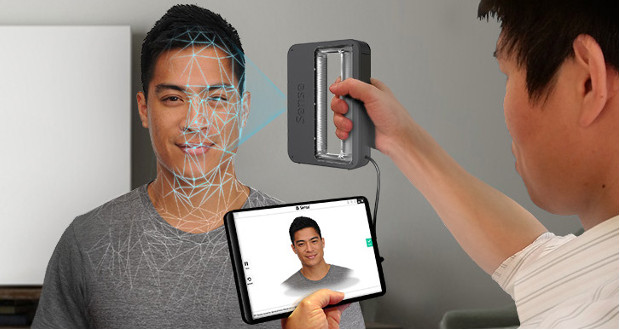3D scanning is the process of analyzing a real-world object or environment to collect data on its shape and possibly its appearance (e.g. colour). The collected data can then be used to construct digital 3D models.3D laser scanners measure fine details and capture free-form shapes to quickly generate highly accurate point clouds.
Appearing at the end of the 1970s, laser triangulation technology paved the way for new technology capable of 3D scanning objects. Usually reserved for industrialists, this tool has gradually evolved over time, allowing us to easily find affordable 3D scanners to use for ourselves. These range from a 3D scanner created by Makerbot, to new scanners that can scan underwater. 3D Laser Scanning is a non-contact, non-destructive technology that digitally captures the shape of physical objects using a line of laser light. ...


3D scans can be used to map Crime scenes, Bullet trajectories, road accidents plane crashes and more.
Reverse engineering of a mechanical component requires a precise digital model of the objects to be reproduced. Rather than a set of points a precise digital model can be represented by a polygon mesh, a set of flat or curved NURBS surfaces, or ideally for mechanical components, a CAD solid model. A 3D scanner can be used to digitise free-form or gradually changing shaped components as well as prismatic geometries whereas a coordinate measuring machine is usually used only to determine simple dimensions of a highly prismatic model. These data points are then processed to create a usable digital model, usually using specialized reverse engineering software.
3D scanning is often used in the construction and civil engineering industry.
A 3D laser scanner may function as the 'eye' of a robot.
As-built drawings of bridges, industrial plants, and monuments,historical sites, site modelling and lay outing, payload monitoring, freeway redesign and other forensic documentation3D scanners are used to capture the 3D shape of a patient in orthotics and dentistry. It gradually supplants tedious plaster cast. CAD/CAM software are then used to design and manufacture the orthosis, prosthesis or dental implants.
Many Chairside dental CAD/CAM systems and Dental Laboratory CAD/CAM systems use 3D Scanner technologies to capture the 3D surface of a dental preparation (either in vivo or in vitro), in order to produce a restoration digitally using CAD software and ultimately produce the final restoration using a CAM technology (such as a CNC milling machine, or 3D printer).
A helpful website: https://www.artec3d.com/3d-models.